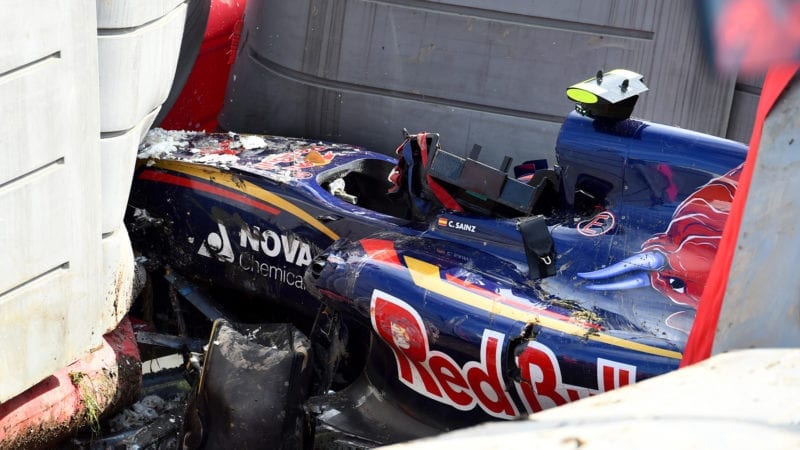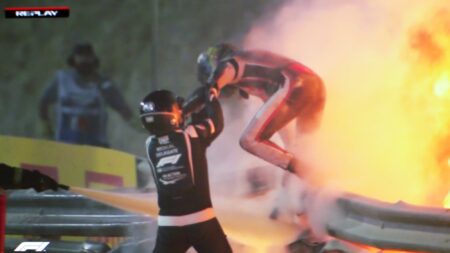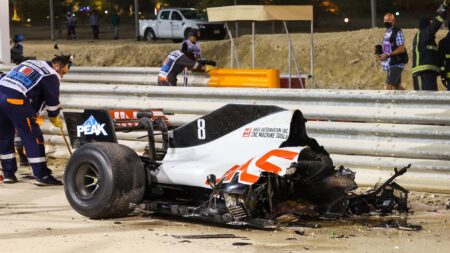“Concrete blocks can deflect energy and they are not going to be broken. Guardrails [on the race track] are stiffer than what you might find on the highway, but it’s still elastic, it’s still deformable.
“The whole point of the guardrail is that it fits inside the ground and should bend the poles, because otherwise it is like a wall.
Zaffelli pointed to further evidence of the guardrail acting as predicted: “On the video footage, you can see there is a cloud of sand one or two frames after the first impact. The first pole that was just bending itself, absorbing energy, and as a result vaulting dirt into the air.”
Circuit designers use a range of barriers to cope with the most likely set of collisions. In braking zones, soft and padded layers are used to absorb as much energy as possible when cars hit them head-first.
But alongside the track, where cars are running parallel, the angle of impact is likely to be much shallower, and it’s safer to allow a car to slide along a relatively rigid surface than to get caught up in a softer one.
“Grosjean’s accident was very unusual,” said Zaffelli. “It’s highly unlikely that you would have cars going almost full speed at that kind of angle into that kind of barrier. The kind of angles you normally have there, it’s better to have something which deflects – but it can only deflect so much.
“You would like the barrier to remain intact as possible, but at some point, when the energy it’s too much, it will break. It’s physics.”
He said that Formula 1 witnessed a similar situation five years ago when Carlos Sainz’s Toro Rosso speared into the barriers at 93mph in a braking zone. On this occasion, he first hit foam-filled TecPro blocks lined up in front of the barrier.
“What we saw [in Bahrain] is something that has been seen already several times,” said Zaffelli. “Probably nobody remembers because it was behind the Tecpro, but think back to Sochi ‘15 when Sainz went into the Tecpro – the guardrail on the back actually collapsed.”

Sainz’s 2015 crash in Sochi also destroyed the guardrail behind the TecPro barrier
Getty Images
However, in Grosjean’s case, there was no layer in front of the barrier because it was running alongside the track. As the barrier deformed, a gap was wedged open between the horizontal guardrails attached to the metal poles in the ground, known as blades, leading to the horrifying images of the front half of the Haas lodged in the barrier, at the centre of a fireball.
It was an unusual, unlucky set of circumstances, said Zaffelli, at a part of the circuit where cars are usually accelerating straight out of a corner.
“The guardrail is supposed to contain the impact with the poles, not with the blades,” he said. “The fact is that Grosjean went into the barrier at an angle of approximately 40 degrees, sliding on the left. When it was sliding it hit the first pole.
“The first pole bent as he hit it, and as soon as he did, it inclined the guardrail, and as soon as this happened it started to rip off the blades.”



